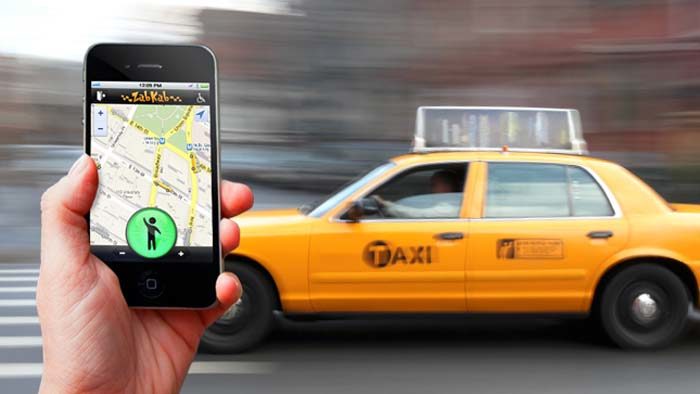Uber Against the World
Of all the ridesharing services under the public microscope today, there is no doubt that Uber is the loudest start-up in the petri dish.
With a tenacious leader in Travis Kalanick, who has been no stranger to controversy during his company’s rise to popularity, Uber is on the cutting edge of a much larger movement: a generational change in perspective regarding the relationship between producer and consumer. AirBnB, TaskRabbit and “ridesharing services” similar to Uber, like Lyft, Hailo and Sidecar, are all shaking up their respective marketplaces, and the paradigm shift has sent shockwaves throughout industries ill-prepared for the revolution.
Leading the charge in this rise of the “sharing economy”, Uber grows larger by the day. Of course, so does its list of enemies, and those enemies have made it clear they’re not backing down without a fight.
At the top of this list is the taxi industry and its union representatives, who have expressed staunch opposition to the smart phone-enabled transportation service in virtually every location where it has launched.
Less than a month ago, Los Angeles cab drivers congregated at City Hall to express their frustration with the renegade start-up, arguing that the firm takes advantage of a heavily regulated industry without being subjected to these regulations itself. In Europe, recent protests have turned violent and even required police intervention in some cities including Paris, London and Madrid, where the taxi industry has a history of deep-rooted union backing and government protection.
The local protests also ring loudly. It was less than six weeks ago that a consortium of frustrated cabbies, organized by the Boston Taxi Driver’s Association, gathered at South Street to honk their horns in symphony to protest the service.
One of the most interesting parts of the Uber narrative is the attention the company’s meteoric rise has brought to the taxi industry, which has faced its own controversies and intense public scrutiny in recent memory.
The example of Boston illustrates well the industry’s troubled character. One should recall the Boston Globe’s 2013 Spotlight report that revealed rampant bribery, shoddy financial records management and reporting by companies, and widespread victimization of cab drivers, among other alarming findings. The Globe team was particularly critical of industry titan, Edward Tutunjian, who owns 20% of Boston’s 1,825 licensed cabs and has become the target of federal investigators over allegations of unlawful practices.
Nelson and Nygaard’s The Taxi Consultant Report for the City of Boston, released in October 2013, paints a similarly bleak picture. Among the “Prominent Issues” in the report, the authors mention poor customer responsiveness (with a completion rate of only 78% for all customer requests), significant unmet demand, and a broken system for cash payment receipts, in addition to a host of issues surrounding the Hackney Unit, the industry’s chief regulatory body in Boston.
One of the principal takeaways from both reports is quite simple: the system is rigged, and the cabbies—as well as the consumers—are paying for it.
Enter Uber, now in operation in 37 countries and 128 cities across the globe. Riding the wave of escalating public attention—both positive and negative—the company approaches an IPO with a current valuation over $18 billion. With a growing fan base and an army of investors on their side, the regulators and governing bodies are the last parties they have to convince.
How have city and state governments responded thus far?
The City of New Orleans and the Commonwealth of Virginia have already made a strong statement against the company with cease-and-desist letters. The City of Cambridge MA—widely considered a beacon of tech startups and progressive thinkers across many industries—isn’t immune from the conflict either: its License Commission recently proposed regulations that would significantly limit—if not effectively ban—Uber from operating within its city limits. After significant backlash and outcry on various public forums and social media, the License Commission has agreed to rewrite the regulations from scratch.
Not everyone has a pitchfork in hand.
Take Colorado—the first state to regulate Uber, Lyft and other ride-sharing services. Last month, Gov. John Hickenlooper signed a bill authorizing these services to continue as part of a new class of commercial vehicle service: Transportation Network Companies (TNCs).
As mentioned in Uber’s blog, the new regulations stipulate that all operators pass a comprehensive background check, ensure their vehicles are inspected to meet stringent safety and quality standards, and enroll in a liability insurance plan of at least $1 million to provide coverage during “gap periods”, or when an operator is looking for passengers but has not been hailed by a customer, and $1 million “per occurrence for incidents involving a driver during a prearranged ride”. The regulations also require all Uber drivers to carry permits from the state’s Public Utilities Commission, which must be renewed on an annual basis.
Will other states follow Colorado’s lead? It’s the $18 billion dollar question at the center of this war—a conflict that inspires hope for a more competitive market for transportation services and significant and long overdue changes to the taxi industry.



